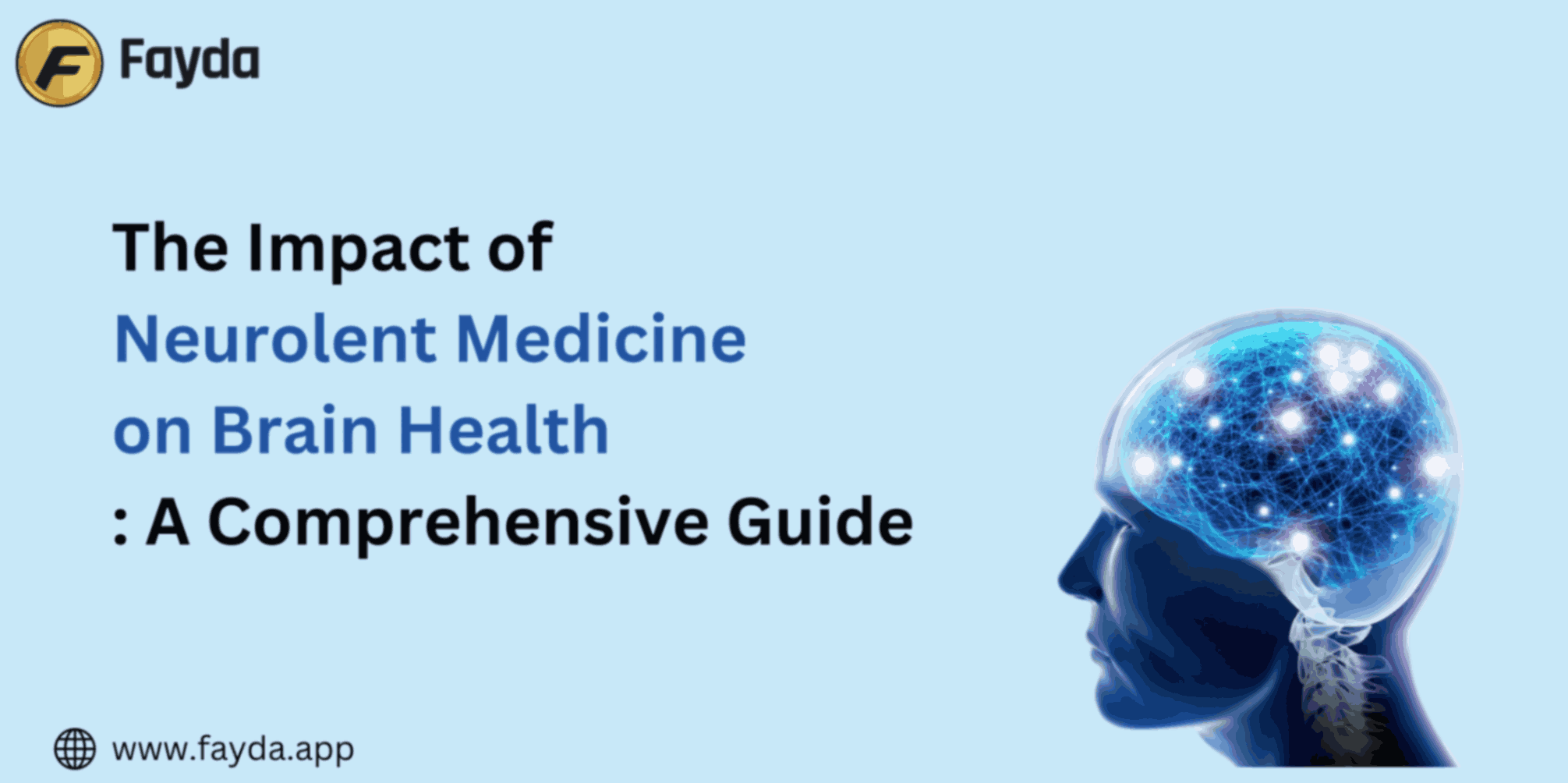Sep

The Impact of Neurolent Medicine on Brain Health: A Comprehensive Guide
In the realm of modern medicine, the exploration of innovative solutions to complex health issues is an ongoing journey. One such frontier is Neurolent Medicine, a field that has captured the imagination of researchers, clinicians, and patients alike. In this comprehensive guide, we will delve deep into the world of Neurolent Medicine, exploring its profound impact on brain health. We will navigate through its definition, the pivotal role it plays in addressing brain-related ailments, its mechanisms, and the potential it holds for the future of neuroscience.
Understanding Neurolent Medicine
What is Neurolent Medicine?
Neurolent Medicine represents a revolutionary branch of medical science dedicated to the advancement of treatments for various brain-related disorders. To grasp its significance, we must first comprehend the scope of these neurological conditions.
The Spectrum of Brain-Related Disorders
Neurological disorders encompass a diverse range of conditions affecting the brain and the nervous system. These ailments can manifest in myriad ways, including cognitive impairments, movement difficulties, emotional disturbances, and sensory alterations. Recognizable examples include Alzheimer's disease, epilepsy, Parkinson's disease, and traumatic brain injuries.
The Driving Force: Unmet Medical Needs
The prevalence of brain-related disorders is escalating, primarily due to an aging population. These conditions often inflict profound hardships on individuals and their loved ones. Conventional treatments, although valuable, frequently fall short in providing comprehensive solutions. As a result, there is an urgent demand for novel approaches, and Neurolent Medicine has emerged as a beacon of hope.
Neurolent Medicine in Action
Neurolent Medicine encompasses a wide array of applications, each tailored to address specific aspects of brain health. Let's explore some of the key areas where Neurolent Medicine is making a transformative impact.
Neuroprotection: Safeguarding Brain Cells
Neuroprotection is a pivotal facet of Neurolent Medicine. It involves the development of therapies aimed at shielding nerve cells from damage and degeneration. This approach is especially pertinent for diseases like Alzheimer's and Parkinson's, where the gradual loss of neurons underpins disease progression.
Neuroregeneration: Renewing Neural Pathways
Neuroregeneration seeks to stimulate the growth and repair of damaged nerve cells. This holds great promise for conditions such as spinal cord injuries and strokes, where the restoration of neural function is of paramount importance.
Neuromodulation: Fine-Tuning Neural Activity
Neuromodulation techniques entail the precise regulation of neural activity through electrical or chemical means. Deep brain stimulation (DBS), a prominent Neurolent Medicine application, is employed to manage symptoms in conditions like Parkinson's disease and depression.
Neuropharmacology: Crafting Tailored Medications
Neurolent Medicine also ventures into the realm of pharmaceutical innovation. Researchers are tirelessly working to identify new compounds and therapies designed specifically for various neurological conditions. These developments aim to slow disease progression, alleviate symptoms, and, in some cases, provide a cure.
The Mechanics of Neurolent Medicine
To appreciate the potential of Neurolent Medicine, it is essential to comprehend the intricate mechanisms underlying its function.
Decoding the Brain's Complexity
The human brain is an astonishingly complex organ, housing billions of neurons that communicate via electrical impulses and chemical signals. These neurons form intricate networks responsible for regulating all bodily functions, including thoughts, emotions, and motor skills.
Targeted Interventions: Precision Medicine
Neurolent Medicine operates by intervening in these neural networks in precise and controlled ways. This intervention can involve introducing substances that encourage neural growth, regulating abnormal electrical activity, or protecting neurons from destructive processes.
The Role of Neuroimaging and Diagnostics
Accurate diagnosis is a cornerstone of Neurolent Medicine. Advanced neuroimaging techniques, such as MRI and PET scans, allow clinicians and researchers to visualize the brain's structure and function. These tools are instrumental in identifying areas of concern and monitoring the progress of treatments.
The Promise of Personalized Medicine
One of the most exciting aspects of Neurolent Medicine is its potential for personalized treatments. Each patient's experience with a neurological disorder is unique, and Neurolent therapies can be customized to address their specific needs, considering genetic factors, environmental influences, and lifestyle choices.
The Future of Brain Health: Neurolent Medicine's Promise
As Neurolent Medicine continues to evolve, it holds the potential to revolutionize our approach to brain health. Let's glimpse into the future and explore the exciting possibilities that lie ahead.
Pioneering Gene Therapies
Gene therapies stand as a beacon of hope in Neurolent Medicine. Researchers are actively exploring methods to modify or replace defective genes that contribute to neurological disorders. This groundbreaking approach could offer long-term solutions for conditions previously deemed untreatable.
Embracing Stem Cell Therapies
Stem cell research stands at the forefront of Neurolent Medicine. Scientists are investigating the use of stem cells to repair damaged neural tissue and restore lost function. Although in its early stages, this field holds immense promise.
Unleashing the Power of Neurotechnology
Advancements in neurotechnology are unlocking innovative treatments, such as brain-computer interfaces (BCIs) and neurofeedback. BCIs enable direct communication between the brain and external devices, offering hope to paralyzed individuals seeking to regain mobility and independence.
Harnessing AI and Machine Learning
Artificial intelligence (AI) and machine learning are becoming indispensable tools in Neurolent Medicine. These technologies analyze vast datasets to identify patterns, predict disease progression, and optimize treatment plans, leading to more effective therapies.
Challenges and Ethical Considerations
While the prospects of Neurolent Medicine are exciting, they come with a set of challenges and ethical considerations that demand careful consideration.
Ethical Dilemmas: Balancing Power and Responsibility
Manipulating the nervous system raises profound ethical questions surrounding consent, autonomy, and the potential for unintended consequences. Clear ethical guidelines are essential to ensure that Neurolent treatments are used responsibly and ethically.
Accessibility: Bridging the Divide
Ensuring equitable access to Neurolent treatments is of paramount importance. There is a risk that these groundbreaking therapies may become accessible only to those with significant financial resources, exacerbating healthcare disparities.
Long-Term Safety: Navigating the Unknown
The long-term safety of Neurolent treatments remains a critical concern. Rigorous testing and continuous monitoring are imperative to ensure that these therapies do not lead to unforeseen side effects or complications.
The Future of Brain Health
In the final chapter of our exploration, we envision a future where Neurolent Medicine plays a central role in promoting brain health.
Shifting the Focus to Prevention and Early Intervention
One of the primary goals of Neurolent Medicine is to shift the paradigm from treatment to prevention and early intervention. Identifying risk factors and implementing strategies to delay or prevent neurological disorders could significantly enhance public health outcomes.
Integration with Conventional Medicine
Neurolent Medicine is not meant to supplant traditional medical approaches but to complement them. In the future, we can anticipate a more integrated healthcare system where Neurolent therapies work in harmony with existing treatments.
A Vision of Patient-Centric Care
As the field advances, patient-centric care will become increasingly pivotal. Tailored treatment plans, accounting for each patient's unique genetic makeup, lifestyle, and preferences, will become the standard of care.
Conclusion
Neurolent Medicine stands as a beacon of hope on the horizon of brain health. Its potential to transform the lives of individuals affected by neurological disorders is vast and inspiring. Yet, as we march forward, we must remain vigilant about the ethical, accessibility, and safety challenges that accompany these innovative treatments. The future of Neurolent Medicine holds the promise of a world where neurological disorders are better understood, effectively treated, and, ideally, prevented. With ongoing research, collaboration, and ethical considerations at its core, Neurolent Medicine has the potential to redefine the landscape of brain health, offering hope and healing to countless individuals around the globe.


